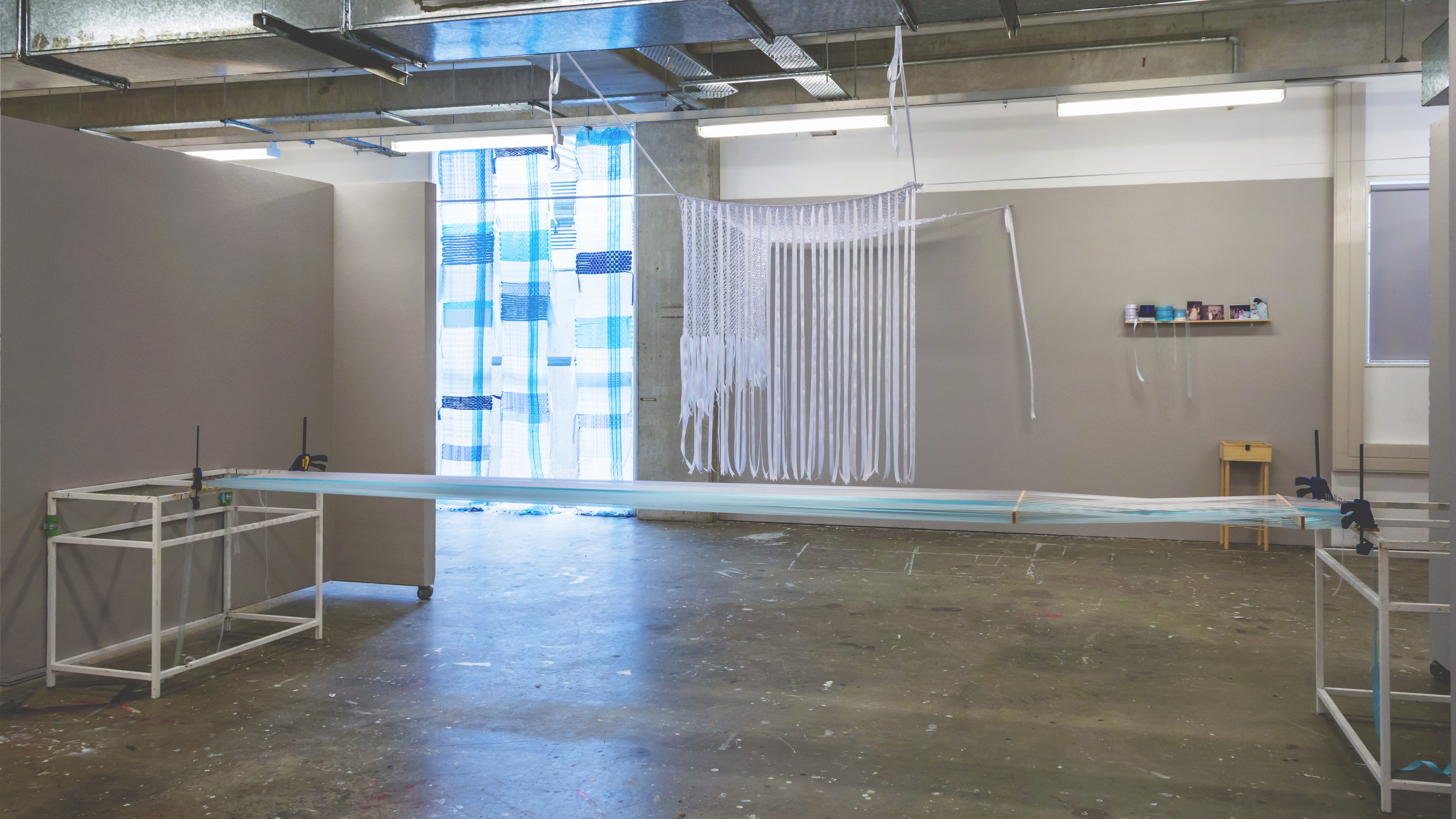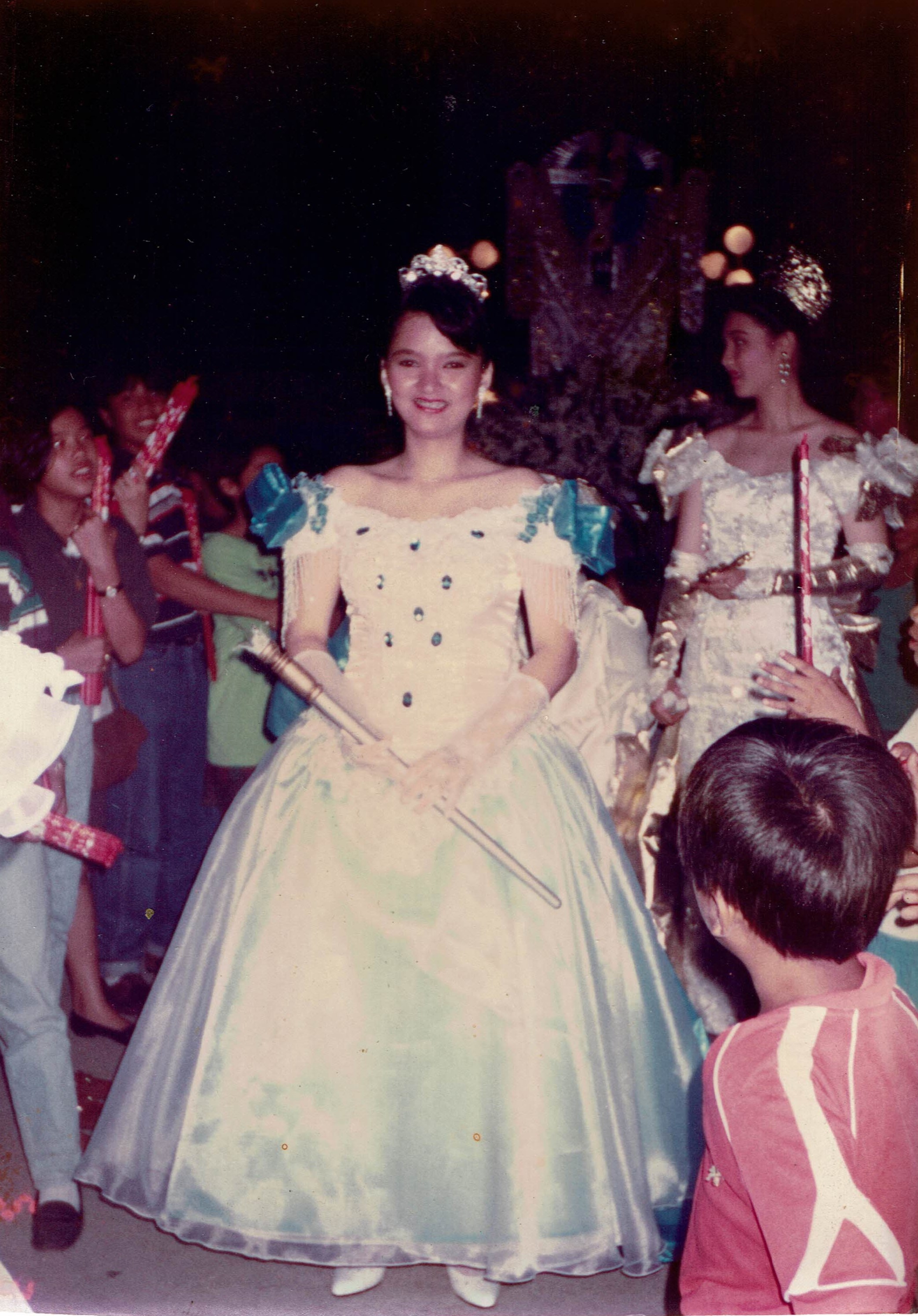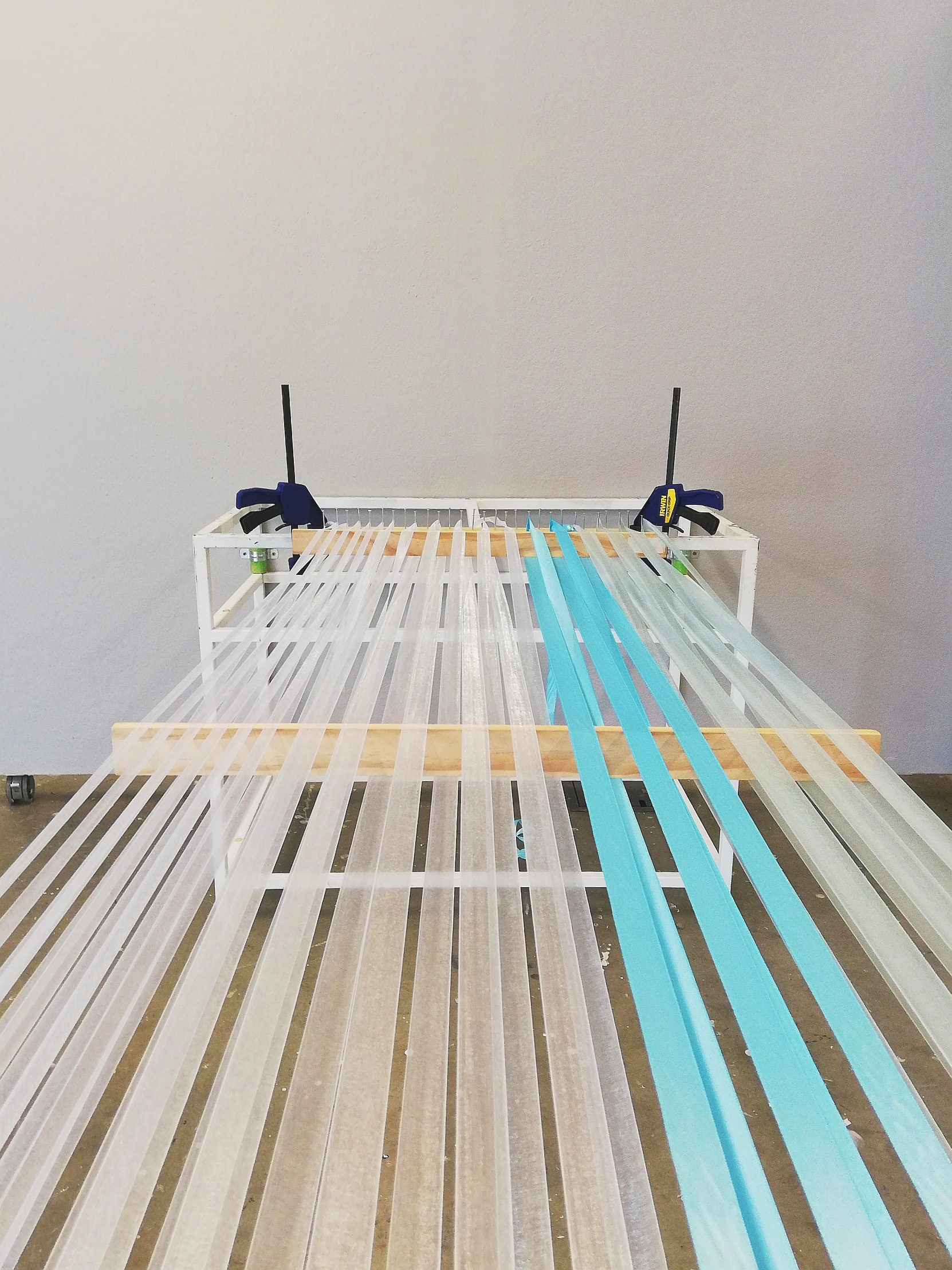

Over her shoulders draws on found archives and objects from my childhood and my family’s photo album; in particular, four images that focus on garments worn by my matriarchal line. These include my Lola in a ‘Santacruzan’ dress as “Reyna Elena” my Mother as ‘Reyna de las Estrellas’ (Queen of Stars), also in her Santacruzan dress;1 my Lola at home with me in her green ‘duster’ dress;2 and Mother who had just given birth to me, also wearing the same dress. Pursuing my interest in these contrasting images of my Lola and Mother in public vs domestic settings has led to process-led material explorations that reflect upon memories and nostalgic references from our compilation of archive and oral histories.
In the Philippines, I grew up closer to my Mother’s side of my family. My Lola's house is sited right next to a commercial area where only concrete walls separate the domestic from the commercial. Due to the Philippines' history of colonisation, there are strong implementations of western ideologies such as a women's “domestic sphere” (manifested by the industrial revolution) that is still present in today’s society. I believe the social condemnation of a woman’s image in private domestic spaces within society mimics what I see as the dismissal of craft and the domestic in high art.
The daster toile (duster dress)is sewn to the same measurement as my Lola/Mother’s dress. I wear this dress when I am working on my pieces; parading the domestic nature of my work against the institutionalised and commercialised space. The cotton material of daster toile presents as a blank canvas for possibilities of the grey areas of craft and the domestic in contemporary art. The handmade labour of weaving and knotting the ribbons contrasts against the mass-produced materials of the ribbons in Reyna de las Flores and walang kwentang kulambo (trans. useless mosquito net) refer to the decorative Santacruzan dresses. “After decades of technological advances and massive mass production, making something with your hands has grown into a radical act.”1
Repeatedly modifying the photographs through the process of making and installation, my process nurtures discussions within the ideas of domesticity in the context of the contrasting Santacruzan and duster dresses. The restrained colour palette and patterns that draw on the Santacruzan and original duster dress in the artworks rest within a commercialised space (e.g. curtains/kulambo) reveal and manipulate the nature of the archival images redefining the status of these objects. In particular, the flower pattern from the green ‘duster’ dress that my mother and grandmother both wore in the archives. This pattern is used to hand decorate the ceramic pearls in the work “Reyna de las Flores’s necklace” as a symbol of how the flower pattern of the duster has been embedded in my memory from my childhood. As if, passing down a piece of jewelry from generation to generation.
"The grey walls of the installation refer to the quality of concrete in the domestic and industrial site of our home in the Philippines. This reference enhances the tensions between the functional and the decorative referencing the status relegation of the ‘other’ between the ‘self/other, public/private."2 The mosquito net and the loom have been deliberately left as provisional and unfinished. It is an aspect of paying homage to the relationship between the maker and the process; “a strategy of changing the portrayal and experience of the artist's role.”3 Now, the making is not hidden, creating possibilities for the viewer to discover and connect.



